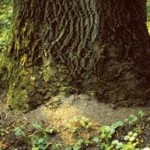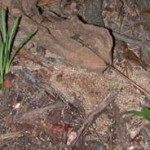MN Ant Extermination
If you live in Minnesota, I don’t have to tell you the past weeks have been cold, wet, and rainy, and now the first snow fall of the year and the snowflakes are flying. Welcome to November in Minnesota… the land of 10,000 lakes, crisp nights and spectacular fall colors, and apparently carpenter ants. Call it our winter dress rehearsal. At least that’s if you put any stock in the Farmer’s Almanac.
We may have mostly lucked out for the past few years, but this year the Farmers’ Almanac is predicting a snowy, cold, frosty, wet winter for the Midwest. All perfect conditions for carpenter ants! Obviously, they didn’t get the memo about hibernating for the winter.
Carpenter Ants
Most people think ants, especially carpenter ants, are only a spring/summer problem. Unfortunately this is not the case. Plenty of unsuspecting homeowners have carpenter ant colonies residing within their homes year round. In fact, it’s not unusual to get a flurry of calls right around the holidays from a homeowner who is perplexed as to why they see ants while there is snow on the ground.
The seasons in Minnesota play a major role in pest an insect activity. Apparently, it’s not just picnics that bring out the ants. For example, even the slightest rain can cause ants to seek refuge in your home. When moisture seeps into the tiny insects’ subterranean quarters, they head for drier ground — often in your homes and kitchen cupboards. They might be residing, growing, and multiplying right under your nose already!
Fall and winter ant control can be very difficult. Carpenter ant colonies are usually found in areas that are warm and wet, but in the winter they are found in obscure areas like hollow doors, shower rods, under cabinets or my favorite; stored basement items where they are not as easily seen. They are much too clever for that.
Prevention

 These black ants may be part of nature’s cleanup crew, helping to rid the world of decaying wood, dead insects and other debris. But they need to be conducting their business outdoors, in old logs and trees… not in your house! Carpenter ants are destructive to a home’s wood structure. (For a picture of a carpenter ant and the type of damage they do, go to www.extension.umn.edu/distribution/housingandclothing/DK1015.html.
These black ants may be part of nature’s cleanup crew, helping to rid the world of decaying wood, dead insects and other debris. But they need to be conducting their business outdoors, in old logs and trees… not in your house! Carpenter ants are destructive to a home’s wood structure. (For a picture of a carpenter ant and the type of damage they do, go to www.extension.umn.edu/distribution/housingandclothing/DK1015.html.
The ants you see may or may not be a problem. An occasional carpenter ant or two in your home may be scouts that made their way indoors to snoop around. But if ants are actively cruising the house in winter, or you see more than just a few, they probably have made a nest inside.
First, ants never quit. If they’re headed somewhere and you try to stop them, they will look for another way. They’ll climb over, they’ll climb under, and they’ll climb around. They will get to where they want to go!

The presence of numerous carpenter ants moving up and down a tree trunk in more or less a single file line is a strong indication of more.
There are some steps homeowners can take several measures to help prevent future problems with carpenter ants.
- Eliminate sources of excess moisture to help make the home a less desirable nesting site to ants and other pests.
- Fix leaks around attic vents, pipes and sinks, and around chimneys and skylights.
- Replace water-damaged wood.
- Dry out the crawl space by installing a vapor barrier and foundation vents.
- Keep rain gutters clean and adjust drain spouts so water flows away from the building. Install rain gutters if they do not already exist.
- Trim tree limbs away from the structure.

Since carpenter ants do not eat the wood they chew, piles of sawdust-like wood shavings are commonly found at the base of trees where carpenter ants nest.
Foraging carpenter ants often enter structures by bridging to roofs and siding from tree branches in contact with these surfaces. Once ants have found their way into homes, they can be difficult to budge. The creatures leave trails of scent for other ants to follow and are notoriously resilient.
Because carpenter ants like damp wood, areas that are or have been wet are an invitation to them to move in, make a satellite nest and start chewing. Consider this:
* Winter leakage due to ice dams or attic frosting is common after snowy weather or extended cold spells.
* Clogged gutters can cause fall rains and winter snowmelt to back up and spill into soffit areas or down exterior walls.
* Extensive and persistent window condensation can leave framing damp and attractive to ants.
* A slow plumbing leak may be dampening areas behind walls and floors.
* Faulty flashing (material that sheds rainwater) around chimneys, skylights, windows or doors also creates damp spots.
* Finding and destroying nests — indoors and out — is the way to end the infestation. You also must solve the moisture problem and replace any damaged wood to prevent reinfestation.
Minnesota Ant Extermination
Because finding and treating nests can be difficult, hiring a Minnesota Exterminator to do the job may be your best choice. Such companies also have access to chemicals not available to consumers. Look for a company that will find and treat the main nest outdoors as well as any satellite nests indoors. Once a property is effectively treated, a regular spraying schedule for carpenter ants is unnecessary. You just need to keep the house dry and well-maintained.
Oh… and by the way… Ants aren’t the only ones that are out in full force during the fall and winter months. So, be on the lookout spiders, box elder bugs, and other insects, as well as wild animals so you can head them off at the door, or wherever they decide to crawl in. And while one or two might not be alarming, it’s a whole different matter when their relatives arrive!




